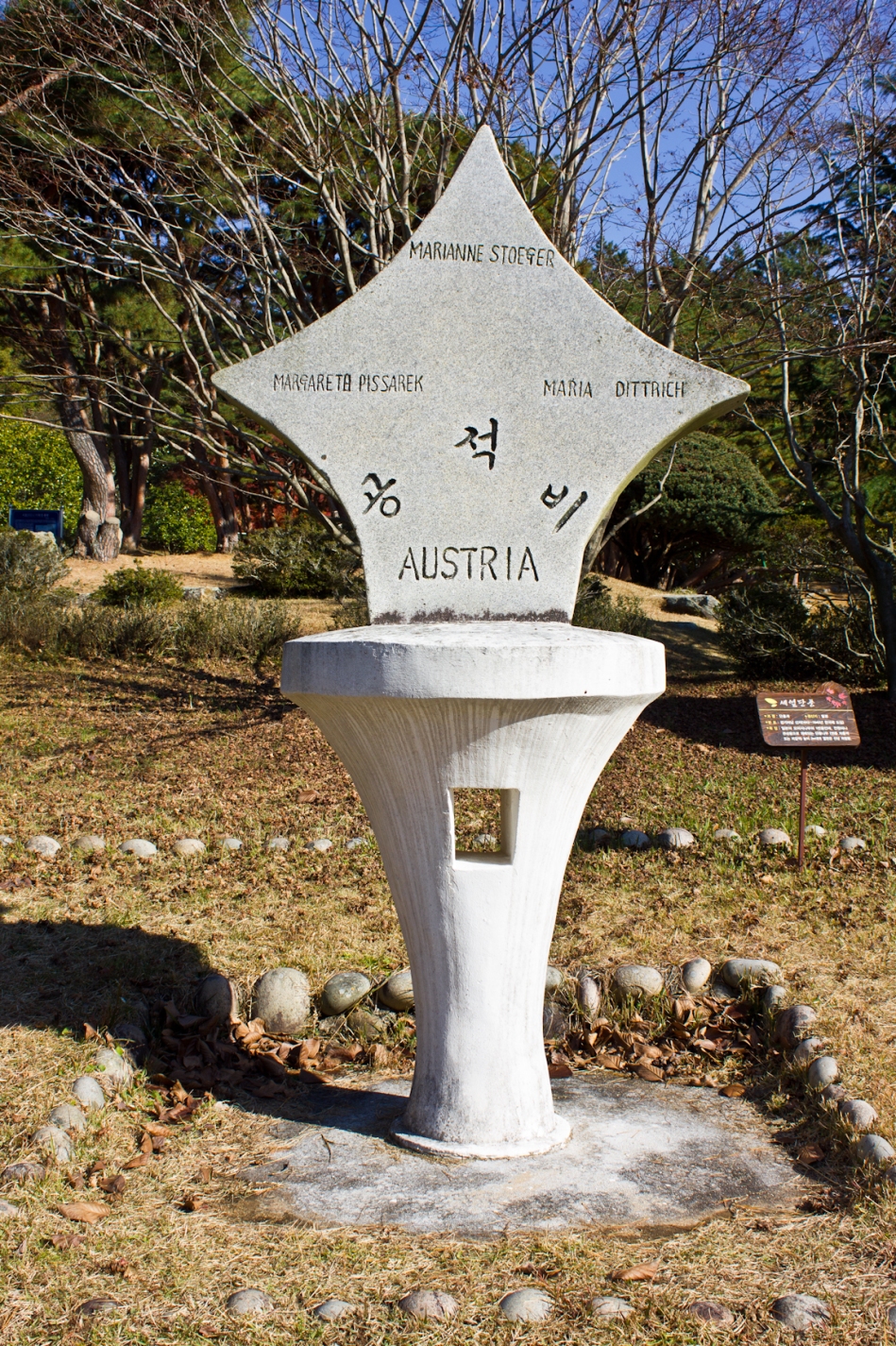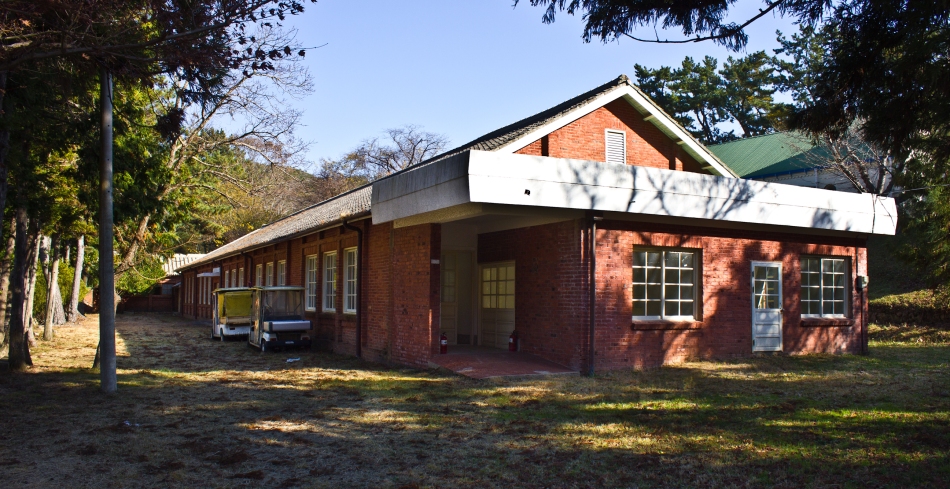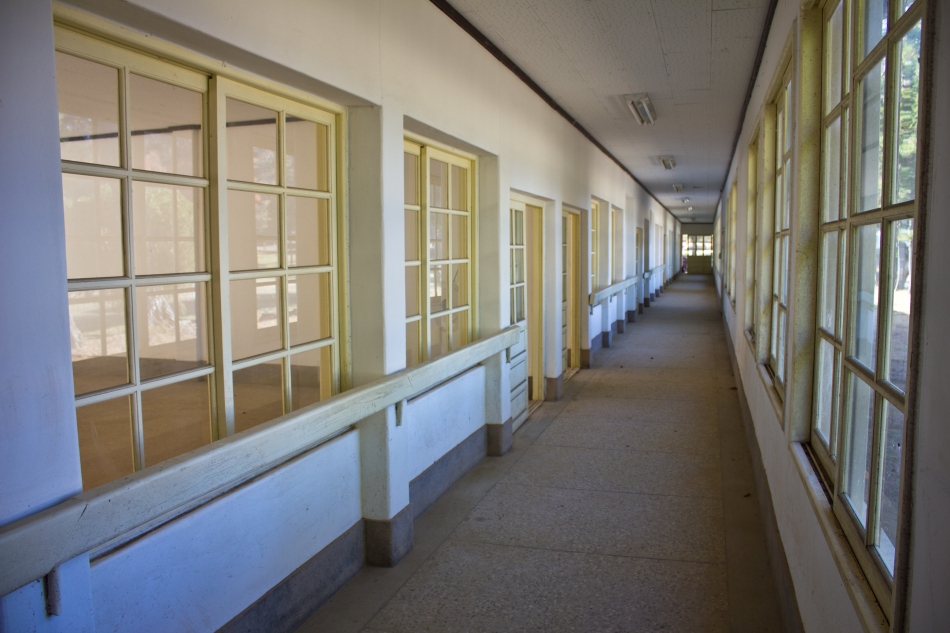Sorokdo’s tragic past stands as a historic example of human rights abuse – particularly abuse committed under the name of medical modernity. At first glance, the island is deceptively beautiful and doesn’t resemble what we would imagine a leper colony to look like. As you cross over the suspension bridge from Goheung, everything is notably more serene here. A few of the old medical facilities here have been restored and turned into museums, but at least half of the island lays riddled with abandoned red brick structures from the colonial period. In 1907, Imperial Japan enacted the Leprosy Prevention Law, forcing known lepers into isolation.1 This was despite the globally accepted view that segregation of lepers was not medically necessary, calling into question the new colonists’ intentions.2 Because quarantine protocols for ships arriving in colonial Japanese ports at the time were also arguably used for political means,3 it can then be suggested that “medical modernity” may have been invoked at least a few times to further secondary or hidden imperial agendas.
By 1916, Sorokdo was chosen as the quarantine zone for Koreans with what is alternatively known as Hansen’s disease. As more facilities were established, all leper patients on the peninsula, including Japanese settlers, were made to live in seclusion on Sorokdo in accordance with the 1907 law. It wasn’t until 1934 that Sorokdo National Hospital was officially established.4 Before this, the first clinic started with 73 patients, growing to more than 6,000 by the 1940s. Though only part of the current community is open to the public, the island probably retains almost all of its colonial buildings. Some, like the one pictured below, have been kept in good shape and are still in use.
Autopsy Lab
Close to the community’s entrance is an old, two room medical laboratory. Built in 1934 and fitted with wooden cabinetry representative of the period, the interior is a rather eerie sight. The lab’s most striking feature is the stone cutting slab in the middle of the room. Near the autopsy table’s metal base, which is firmly bolted to the floor, faucets are attached to the slab’s underside. Though individual patients were allowed funerals, all were first required to undergo autopsy at death. To the left lies a cement sink, with the wooden operating table used for vasectomies and sterilizations just in the next room. It is claimed that such operations were used to both punish uncooperative patients 5 and to limit the population.6 Such measures were taken across the entire Japanese Empire at the time – and even mainland Japanese lepers on the actual Japanese archipelago were required to be sterilized if they wanted to marry.7
Medicine and sanitation were incredibly important parts of Japan’s identity as a modernizing nation. That Japan’s vision of medical modernity was often reinforced through public sanitation exhibits is further evidence of one of the ways in which the Japanese government framed itself as a contemporary and competitive nation on par with Western imperial powers.8 The sterilizations, abortions, and experiments performed here (and to some degree Sorokdo itself) were therefore indirect products of an identity that valued Western ideas of progress. The field of medicine in Imperial Japan was largely influenced by German doctors, such as bacteriologist Robert Koch, and their views of sanitation. Indeed, Japan was very much aware of global medical trends as it had attended several international sanitary conferences.9 This adoption of Western medical theories and practices then turned Japan into somewhat of a modern medical authority in Asia, with people from China coming to Japan to study Western medicine.10
Rehabilitation Center
Next to the Autopsy Lab, behind a short brick wall with a really short entry, sits an H-shaped building with a series “detention rooms” – deemed as such because of the illegality of holding patients against their will. Built in 1935, this was the Sorokdo Rehabilitation Center. Architecturally noteworthy is the remaining slate roof, wooden ceilings, and what appears to have been a well in the center of the courtyard.
Near the Rehab Center and Autopsy Lab are a couple of other buildings, two of which now house exhibits showcasing artifacts and information of the island over the last hundred years.
Sorokdo Park
In 1934, construction of a garden began. Unfortunately, it seems it was largely the patients who were made to build it. Completed in December of 1936, the expansion of the garden into a public park occurred for four months between 1939 and 1940. During this time the leper patients’ construction tasks sometimes resulted in amputations due to both the disease itself and frostbite during winter.11 Natural resources from Wando, Deuk Ryang Bay, Taiwan, and Japan were brought over for the park,12 perhaps indicating just how much money was being put into the place. Amid the various, well-manicured trees and paths lie a handful of monuments.
The (Belgian) Damien Foundation Monument is from 1971, with the Austrian Nurses Monument and Han Ha Un Poet monument dating to 1972. The last photo above shows a monument in memory of the laborer-patients made to worship the Japanese director of the island. This obviously backfired for him as he was later stabbed to death by a patient.
Noksan Elementary School
Built in 1935, it’s interesting that an elementary school would be constructed at all given the way the leper patients seem to have been treated. The structure follows a typical school building design, with bathrooms and showers attached at the end and a basement which can be accessed from the rear.
Seongsil Higher Bible School
Built post-war in 1957 by Sorok Presbyterian Church, the walls are wood paneling with beautiful huge windows that extend the entire length of the structure. It was designed with one long hall that runs along the entire back side.
Food Storehouse
Towards the southern part of Sorokdo sits an old storehouse from 1940 that was used for preserving food. Almost entirely built over the water, this structure is incredibly unique to Korea and is likely the only one of its kind standing today. Brick pillars were formed on a base of some sort before being cemented over to protect the foundation from erosion. Arches elevated the structure off the water to allow for air circulation as the tides came in and out. The wood beams just above the water line, between the pillars and flooring, appear to be new and for structural support.
Mannyeongdang Charnel House
This architecturally distinct cement vault was constructed in 1937. Made to mimic a Japanese pagoda, the ashes of cremated patients were stored here in little wooden boxes. The inside can be accessed through a door in the back with the front containing a small shrine for visitors to pay their respects. Judging by the cyan patina of the roof, it might be made of copper. The small alter at the base of the stairs is probably also indicative of who takes care of the structure now.
The events at Sorokdo during the Japanese occupation were tragic, so much so that some have called it a concentration camp.13 Had there been any positive accounts of colonists or medical staff improving patients’ lives, a pro-colonial-Japanese-medical-modernization argument could be made. Though it is often argued that modernity and progress are good for society in general, it is difficult for some to accept Japan’s introduction of early modern medicine as being good when, at least at Sorokdo, the practices themselves did not serve the patients well. The fact that the segregation law stayed in effect until 1963, with involuntary autopsies continuing until the 1980s, is further evidence of both post-war socio-political complexities and a failure on humanity’s part to fully rescue and restore those on the edges of society. That Imperial Japan would also treat its own citizens in such a way is not only indicative of Darwinistic ideas that were globally popular at the time, but also of the tragic loss of ethics that can occur during times of war and systemic governmental change within imperial nations.
EDIT (Feb. 11, 2015): The first leper asylum was established in 1910 in Busan by Dr. C. H. Erwin and the British Leprosy Mission.14 Conditions in missionary-run leprosariums were reportedly very humane in contrast to Sorokdo. In terms of significant structures that weren’t included in this post, there is an old Shinto shrine (it may be the only one left in Korea and it is quite unfortunate that I missed it), the director’s house, and another jail of some kind. All of these may have been on the western side of the island as I was only able to visit the above structures, which were more or less near the east side.
To see the full photo gallery on Flickr, click here.
Footnotes
1Michio Miyasaka, “An Ethical Analysis of Leprosy Control Policy in Japan,” Eubios Journal of Asian and International Bioethics, 19 (4), 103-107, 2009.
2Executive Committee of the War and Medicine Exhibition, War and Medicine (ウォー・アンド・メディスン). 27th General Assembly of the Japan Medical Congress: 株式会社 三恵社, April 1, 2008.
3Jeong-Ran Kim (2013). The Borderline of ‘Empire’: Japanese Maritime Quarantine in Busan c.1876–1910. Medical History, 57, pp 226-248 doi:10.1017/mdh.2012.104
4“Sorokdo, South Korea,” Leprosy Heritage. Accessed on January 15, 2015.
5Executive Committee of the War and Medicine Exhibition, War and Medicine (ウォー・アンド・メディスン). 27th General Assembly of the Japan Medical Congress: 株式会社 三恵社, April 1, 2008.
6James Card, “Sorokdo: Hope and History at Land’s End,” OhmyNews, last modified March 3, 2005. Accessed on January 15, 2015.
7Executive Committee of the War and Medicine Exhibition, War and Medicine (ウォー・アンド・メディスン). 27th General Assembly of the Japan Medical Congress: 株式会社 三恵社, April 1, 2008.
8Todd A. Henry, Assimilating Seoul: Japanese Rule and the Politics of Public Space in Colonial Korea, 1910-1945 (Oakland, CA: University of California Press, 2014).
9Jeong-Ran Kim (2013). The Borderline of ‘Empire’: Japanese Maritime Quarantine in Busan c.1876–1910. Medical History, 57, pp 226-248 doi:10.1017/mdh.2012.104
10Gotelind Müller-Saini, “Chinese perspectives on the Russo-Japanese War,” Wiesbaden 2007, pp. 203-239.
11Executive Committee of the War and Medicine Exhibition, War and Medicine (ウォー・アンド・メディスン). 27th General Assembly of the Japan Medical Congress: 株式会社 三恵社, April 1, 2008.
12Informational plaque of Sorokdo Park
13Soo-Hyung Lee, “Compensation Claim to be Filed Against the Japanese Government,” The Dong-A Ilbo, June 4, 2004, accessed January 15, 2015.
14Public Health in Asia and the Pacific: Historical and Comparative Perspectives (Oxford, United Kingdom: Routledge, 2011), p. 80.






























Just have begun to look into your blog:) And this is amazing. I have read somewhat precisely about the tragedy of Sorok-Island from a novel called by 이청준 (Which I strongly recommend, but I’m afraid if there’s any English version available. Though I’ve never been to this place, seeing your pictures and the descriptions, I can feel the tragedy in my bones, and visually grasp the atmosphere and the spatial sense(?) that I have read from the novel. This have made me inspired to develop my own blog anytime soon. I’m also deeply into modern and pre-modern architecture. It’s really great to know you and your blog. Hope we could discuss over here anytime. Thanks for your elaboration.
LikeLike
Just have begun to look into your blog:) And this is amazing. I have read somewhat precisely about the tragedy of Sorok-Island from a novel called “당신들의 천국 Their/your Paradise” by 이청준 (Which I strongly recommend, but I’m afraid if there’s any English version available. Though I’ve never been to this place, seeing your pictures and the descriptions, I can feel the tragedy in my bones, and visually grasp the atmosphere and the spatial sense(?) that I have read from the novel. This have made me inspired to develop my own blog anytime soon. I’m also deeply into modern and pre-modern architecture. It’s really great to know you and your blog. Hope we could discuss over here anytime. Thanks for your elaboration.
LikeLike
Thanks for your kind words, and thanks for the book recommendation. I hadn’t heard of it before so it’s nice to know about it. I’m also glad that this blog post could help you get a feel for the atmosphere and better understand the situation at Sorokdo.
Unfortunately, I didn’t see all the remaining colonial structures there. When I visited, I didn’t get to the west side of the island, which contains the last documented Shinto shrine in Korea. I actually didn’t include all the photos I took of Sorokdo in this blog post. You can see more by just searching Flickr and clicking on the ones I took: https://www.flickr.com/search/?text=sorokdo
Please feel free to comment or send me an email anytime! I like discussion.
LikeLiked by 1 person
Thanks, I’ll look into it and also your flickr too. It also makes me wonder what made you so enthusiastic in colonial buildings. Can’t wait to know. I’ll keep looking into it, and share my opinions with you. Cheers!
LikeLike
A lack of authentically old buildings is what drove my interest in the colonial era. Joseon era architecture, which is often promoted to tourists, is wonderful. However, there aren’t many genuine examples left. My first year here in Korea, I would go to photograph temples every weekend only to realize that many of them were reconstructed. There’s something interesting, perhaps even spiritual, about walking in authentically old buildings and “feeling” the history of the space. Reconstructed buildings lack this experience, so I became a little disappointed.
One day, just before Chuseok a couple of years ago, I found photos of the 1908 Gunsan Customs House and the old Linton House in Daejeon on Robert Koehler’s old website. I looked at them and thought, “There’s no way these buildings are in Korea. I’ve never seen anything like this here.” I immediately took a trip over to Gunsan and Daejeon to photograph those places. I started looking for more buildings like those and have been taking weekend photography trips ever since. Later, I realized there weren’t any great English resources on early modern architecture, so I made this blog. It’s become a way for me to learn more about Korea’s history and helps me practice the Korean language, too. It wasn’t until after I started photographing these buildings that I began to learn and understand more about the Japanese occupation.
Early modern hanok are another interest of mine that I am starting to research more. When most people think of “hanok”, they imagine a Joseon era hanok. But the hanok design evolved a lot between 1900-1945 and I think more people should know that there are many kinds of hanok that changed as Korea modernized.
LikeLike
wonderful job. Thanks.
LikeLike
I am going to Sorokdo this weekend. I must see and experience it myself.
LikeLike